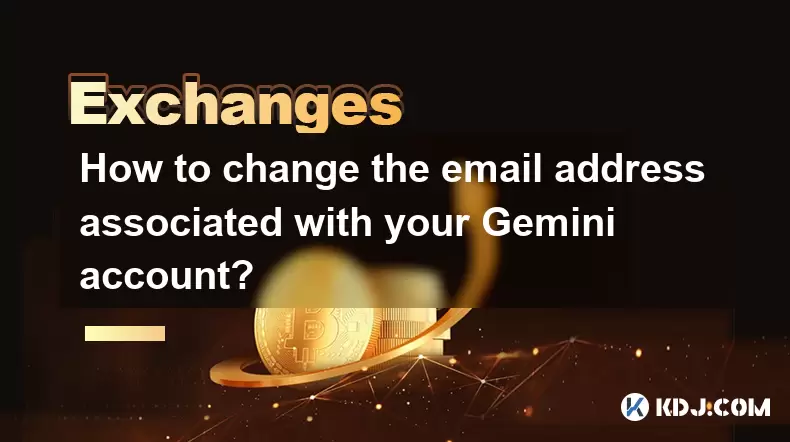-
 Bitcoin
Bitcoin $114200
0.00% -
 Ethereum
Ethereum $3637
0.56% -
 XRP
XRP $2.950
-2.01% -
 Tether USDt
Tether USDt $0.9999
0.02% -
 BNB
BNB $761.0
0.55% -
 Solana
Solana $164.1
-1.38% -
 USDC
USDC $0.9999
0.02% -
 TRON
TRON $0.3332
0.36% -
 Dogecoin
Dogecoin $0.2012
-0.52% -
 Cardano
Cardano $0.7261
-1.41% -
 Hyperliquid
Hyperliquid $37.62
-2.13% -
 Stellar
Stellar $0.3930
-2.65% -
 Sui
Sui $3.441
-0.16% -
 Bitcoin Cash
Bitcoin Cash $563.8
0.70% -
 Chainlink
Chainlink $16.50
0.09% -
 Hedera
Hedera $0.2424
-0.14% -
 Ethena USDe
Ethena USDe $1.001
0.01% -
 Avalanche
Avalanche $22.20
0.00% -
 Litecoin
Litecoin $118.0
-2.48% -
 UNUS SED LEO
UNUS SED LEO $8.991
0.12% -
 Toncoin
Toncoin $3.195
-3.87% -
 Shiba Inu
Shiba Inu $0.00001217
0.12% -
 Uniswap
Uniswap $9.674
-0.21% -
 Polkadot
Polkadot $3.633
1.00% -
 Monero
Monero $295.3
-0.82% -
 Dai
Dai $0.9999
0.00% -
 Bitget Token
Bitget Token $4.321
-0.41% -
 Cronos
Cronos $0.1392
0.73% -
 Pepe
Pepe $0.00001027
-0.89% -
 Aave
Aave $258.5
0.32%
Poloniex Margin Trading Rules
Poloniex offers margin trading with up to 10x leverage, allowing traders to amplify their buying power and potentially increase their trading gains.
Nov 28, 2024 at 04:56 pm

Poloniex Margin Trading Rules: A Comprehensive Guide
Margin trading is a trading strategy that allows traders to borrow funds from an exchange to increase their buying power and trading potential. It can be a risky but rewarding strategy if executed properly. Poloniex is a cryptocurrency exchange that offers margin trading with up to 10x leverage.
Understanding Poloniex Margin Trading Rules
Eligibility: To be eligible for margin trading on Poloniex, you must:
- Verify your identity (KYC)
- Have a positive account balance
- Maintain a minimum account equity of 1 BTC or equivalent
Margin Trading Pairs: Poloniex offers margin trading on a variety of cryptocurrency pairs, including:
- BTC/USDT
- ETH/USDT
- BCH/USDT
- LTC/USDT
- Leverage Levels: Poloniex offers a range of leverage options, from 2x to 10x. The higher the leverage, the higher the potential returns but also the greater the risk.
Step-by-Step Guide to Poloniex Margin Trading
- Create a Poloniex Account: If you don't already have a Poloniex account, you must first create one and complete the KYC verification process.
- Deposit Funds: Margin trading requires sufficient funds in your Poloniex account. You can deposit funds via wire transfer, bank transfer, credit card, or cryptocurrency.
- Enable Margin Trading: Once your account is funded, you must enable margin trading in the settings menu.
- Select a Margin Trading Pair: Choose the cryptocurrency pair you wish to trade on margin.
- Set Leverage Level: Determine the leverage level you wish to use. Remember that higher leverage increases both potential returns and risk.
- Place an Order: Enter the order type, amount, and price. Margin orders can be market orders, limit orders, or stop orders.
- Manage Position: Monitor your margin position closely. Poloniex will automatically liquidate your position if your equity falls below the maintenance margin.
Margin Trading Risk Management
Margin trading involves significant risk, and it is crucial to take the necessary risk management steps.
- Use Stop-Loss Orders: Place stop-loss orders to limit your losses in the event of adverse price movements.
- Monitor Leverage Levels: Use conservative leverage levels, especially in volatile markets.
- Maintain Adequate Margin: Ensure you always have sufficient margin to cover potential losses.
- Diversify Your Portfolio: Spread your risk across different margin trading pairs and avoid concentrating on a single asset.
- Keep Emotions in Check: Margin trading can be emotionally stressful. Avoid making impulsive decisions and stick to your trading plan.
Understanding Poloniex Margin Fees
Poloniex charges various fees for margin trading, including:
- Interest Fees: Interest accrues on borrowed funds daily and is charged based on the prevailing interest rate for each trading pair.
- Maker and Taker Fees: Poloniex charges trading fees for both makers (providers of liquidity) and takers (takers of liquidity).
- Liquidation Fees: If your position is liquidated due to insufficient margin, you may incur liquidation fees.
Conclusion
Margin trading on Poloniex can be a powerful tool for experienced traders who understand the inherent risks involved. By following these rules and implementing sound risk management practices, traders can leverage margin trading to enhance their trading potential.
Disclaimer:info@kdj.com
The information provided is not trading advice. kdj.com does not assume any responsibility for any investments made based on the information provided in this article. Cryptocurrencies are highly volatile and it is highly recommended that you invest with caution after thorough research!
If you believe that the content used on this website infringes your copyright, please contact us immediately (info@kdj.com) and we will delete it promptly.
- Brazil, Bitcoin, Hearing Date: Is Brazil About to Embrace Bitcoin?
- 2025-08-06 20:30:38
- Stabull DEX on Base Chain: A New Era for Stablecoins?
- 2025-08-06 20:47:53
- WeWake Finance: Is This the Crypto ROI Opportunity You've Been Waiting For?
- 2025-08-06 21:10:18
- PancakeSwap, US Stocks, and Perpetual Contracts: A New Frontier in DeFi
- 2025-08-06 21:10:18
- South Korea, Stablecoins, and Online Banks: KakaoBank's Bold Move
- 2025-08-06 20:47:53
- Crypto, ASEAN, and the Philippines: Web3's Rising Star?
- 2025-08-06 21:55:07
Related knowledge

How to set and manage alerts on the Gemini app?
Aug 03,2025 at 11:00am
Understanding the Gemini App Alert SystemThe Gemini app offers users a powerful way to stay informed about their cryptocurrency holdings, price moveme...

How to use the Gemini mobile app to trade on the go?
Aug 04,2025 at 09:14am
Setting Up the Gemini Mobile AppTo begin trading on the go using the Gemini mobile app, the first step is installing the application on your smartphon...

How to set up a corporate account on Gemini?
Aug 05,2025 at 03:29pm
Understanding Gemini Corporate AccountsGemini is a regulated cryptocurrency exchange platform that supports both individual and corporate account crea...

How to change the email address associated with your Gemini account?
Aug 06,2025 at 08:49pm
Understanding the Importance of Updating Your Email on GeminiYour email address serves as a primary identifier and communication channel for your Gemi...

What to do if you forgot your Gemini password?
Aug 04,2025 at 03:42am
Understanding the Role of Passwords in Gemini AccountsWhen using Gemini, a regulated cryptocurrency exchange platform, your password serves as one of ...

What are the websocket feeds available from the Gemini API?
Aug 03,2025 at 07:43pm
Overview of Gemini WebSocket FeedsThe Gemini API provides real-time market data through its WebSocket feeds, enabling developers and traders to receiv...

How to set and manage alerts on the Gemini app?
Aug 03,2025 at 11:00am
Understanding the Gemini App Alert SystemThe Gemini app offers users a powerful way to stay informed about their cryptocurrency holdings, price moveme...

How to use the Gemini mobile app to trade on the go?
Aug 04,2025 at 09:14am
Setting Up the Gemini Mobile AppTo begin trading on the go using the Gemini mobile app, the first step is installing the application on your smartphon...

How to set up a corporate account on Gemini?
Aug 05,2025 at 03:29pm
Understanding Gemini Corporate AccountsGemini is a regulated cryptocurrency exchange platform that supports both individual and corporate account crea...

How to change the email address associated with your Gemini account?
Aug 06,2025 at 08:49pm
Understanding the Importance of Updating Your Email on GeminiYour email address serves as a primary identifier and communication channel for your Gemi...

What to do if you forgot your Gemini password?
Aug 04,2025 at 03:42am
Understanding the Role of Passwords in Gemini AccountsWhen using Gemini, a regulated cryptocurrency exchange platform, your password serves as one of ...

What are the websocket feeds available from the Gemini API?
Aug 03,2025 at 07:43pm
Overview of Gemini WebSocket FeedsThe Gemini API provides real-time market data through its WebSocket feeds, enabling developers and traders to receiv...
See all articles

























































































